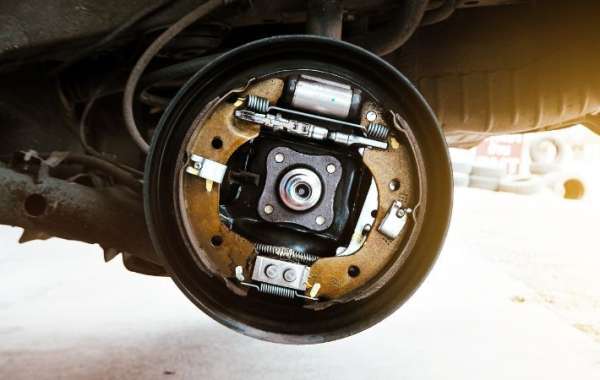The global automotive brake wheel cylinder market size is poised for significant growth, with a projected Compound Annual Growth Rate (CAGR) of 4.2% during the period 2024-2032. This growth is fueled by the increasing demand for safer and more reliable vehicles, coupled with advancements in brake technology itself. At the heart of this progress lies the humble brake wheel cylinder, a critical component within a car's braking system.
The Unsung Hero: Importance of Brake Wheel Cylinders
Before diving into the advancements, let's establish the crucial role brake wheel cylinders play. When you press down on the brake pedal, a chain reaction is initiated within the hydraulic braking system. Brake fluid, pressurized by the master cylinder, travels through brake lines to the wheel cylinders positioned near each wheel. Inside the wheel cylinder, the hydraulic pressure pushes a piston outward. This, in turn, forces the brake pads against the brake rotors, creating the friction that ultimately slows down or stops the vehicle.
A Journey Through Time: Historical Overview of Brake Wheel Cylinders
The concept of using hydraulic pressure to actuate brakes dates back to the late 19th century. Early brake wheel cylinders were often simple single-piston designs made from cast iron. These early systems, while functional, were prone to issues like uneven braking force distribution and corrosion.
The 20th century witnessed advancements like the introduction of double-piston cylinders, offering improved braking balance. The use of lighter materials like aluminum also began to gain traction, leading to weight reduction and improved performance.
Click here to check our other reports: https://www.expertmarketresearch.com.au/
Material Matters: The Rise of Advanced Materials
The automotive brake wheel cylinder market is witnessing a shift towards advanced materials. Traditional cast iron, while robust, is heavy. Lighter alternatives like aluminum offer several advantages. They reduce unsprung weight, leading to improved handling and fuel efficiency. Additionally, aluminum offers better heat dissipation, a crucial factor for optimal braking performance, especially during heavy braking situations.
Composite materials are also showing promise. They offer a combination of lightweight properties with high strength and durability. As research and development in this area progress, we can expect to see wider adoption of composite materials in future brake wheel cylinder designs.
Design Innovations: Optimizing Performance and Safety
Beyond materials, design innovations are pushing the boundaries of brake wheel cylinder technology. Double-piston cylinders are now commonplace, providing superior braking force distribution compared to single-piston designs. This translates to a more stable and predictable braking experience.
Tandem master cylinder designs are another innovation gaining traction. These systems essentially consist of two master cylinders working in conjunction. This redundancy offers an extra layer of safety in case of a malfunction in one of the circuits.
The Electronic Revolution: Integration with Brake-by-Wire Systems
The automotive industry is witnessing a shift towards electronic brake systems, often referred to as brake-by-wire systems. These systems replace the traditional hydraulic connection between the brake pedal and the wheel cylinders with electronic controls. Sensors monitor driver input and various vehicle parameters, feeding information to a central processing unit (ECU) that modulates the braking force at each wheel electronically.
This integration brings several advantages. Electronic brake systems offer superior precision and responsiveness compared to traditional hydraulic systems. They also enable advanced features like Anti-lock Braking Systems (ABS) and Electronic Brake-force Distribution (EBD) to function more effectively. Additionally, these systems pave the way for the development of autonomous emergency braking systems, further enhancing vehicle safety.
Charting the Course: Future Trends in Brake Wheel Cylinder Technology
The future of automotive brake wheel cylinder technology is brimming with possibilities. Research and development are ongoing in areas like:
- Automated Braking Systems: Advancements in sensor technology and artificial intelligence (AI) could lead to the development of fully automated braking systems. These systems would take complete control of the braking process in emergency situations, significantly reducing reaction times and potentially preventing accidents.
- Integration with Vehicle Safety Systems: Brake wheel cylinders could become even more integrated with advanced vehicle safety systems. Communication with other onboard systems like traction control and stability control could optimize overall vehicle dynamics and safety during critical maneuvers.
Case Studies: Putting Theory into Practice
Several car manufacturers are already reaping the benefits of advanced brake wheel cylinder technology. For instance, some high-performance vehicles utilize lightweight aluminum or composite brake wheel cylinders for improved braking performance and weight reduction. Additionally, the integration of electronic brake systems with wheel cylinder sensors is becoming increasingly common across various vehicle segments, offering drivers a safer and more responsive driving experience.



